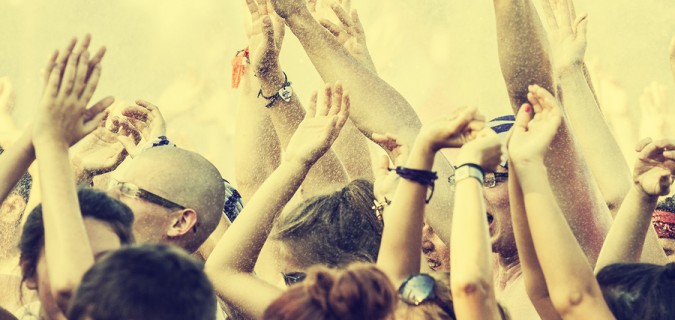When you talk about the birth of the music festival and festival culture, almost everyone will mention Woodstock. Its lasting effect on lifestyle culture has blossomed into an array of music festivals across the globe. They all channel the unity, community, connectivity and shared experience that Woodstock defined. Sponsorships drove the exponential growth of festivals and the continued success that festival influence brought to the live show revenue stream continued to rise as well.
To put it in perspective, from 1999 to 2009, North American live music revenues shot from $1.5 billion to a peak of $4.6 billion while actual music sales plummeted. People still wanted to come together and feel a real connection to one another. The connection that a music-going experience provides is seemingly innate. In an age where you text instead of call and check your friends’ Facebook pages instead of making time to get coffee and catch up, festivals fill a void created by technology.
How You Can Leverage Festival Culture to Target Your Startup’s Demographic
My experience with PR and the festival culture has shown that brands are gaining traction in this setting. Many of these festival-goers, like it or not, are the future. And these festivals are where they are becoming individuals, relating to brands with similar interests and ideas, and transitioning into conscious consumers — connecting with services, goods, products, concepts, music, art and technology that resonates with their lifestyle.
And now, when you go to Coachella or SXSW, you’ll see everyone snapping pictures and shooting videos to document the experience. Social media is what matters now. Because of this, sponsored onsite pop-up activations have become the key to creating real ROI for the short, mid and long term. At almost every festival today, startups, car companies, music blogs, restaurants and digital agencies all vie for brand recognition and influence distribution.
When an event activation is creative, innovative, and geared toward the type of audience at the festival, its application for connecting brands and consumers is at its highest potential. By engaging with festival goers over social media, implementing your brand into activations onsite, you inherently become the viewed provider of the experience, developing your brand as the strongest consumer-related association with the festival.
Staying Connected Matters Most
In the same spirit that festival culture has always pronounced so clearly, the idea of connecting with others prevails. It’s becoming clear that in the present and foreseeable future, millennials look to social media for many of their daily needs. This fact has directly impacted the way advertising and brand influence chooses to interact with festival culture and is now helping to redefine it.
Brands could simply integrate their presence into the constant social media documentation. Working with creative marketing agencies, especially ones that are crucial to the festival circuit, is vital in implementing your brand and assets to take full advantage of the terrain. Create the most organic brand awareness possible by having appropriate signage, digital implementation of your brand to get access to the festival goers’ followers and Facebook friends, and an engaging activation onsite that connects your brand with the festival experience at large.
People come to festivals to connect, and the sponsors and marketing dollars are more aware of that fact than ever. It just so happens that instead of connecting with the community formed at the festival, more and more “social interaction” is occurring online. Because of this, social media has served as the catalyst for brands to spread influence and create brand awareness. Meanwhile, the twenty-something festival goer is typically scouting the terrain for an experience worth capturing, posting it on social media and feeling fulfilled in taking the festival experience and using it to connect.
So where does this leave us? A festival full of new and trending music, tech/social marketing integration, and a culture of millennials who embrace the experiences created for them. This can be a win-win-win for the festival goer, the music and business, but we must all create this culture together, as culture is always the sum of its parts.













